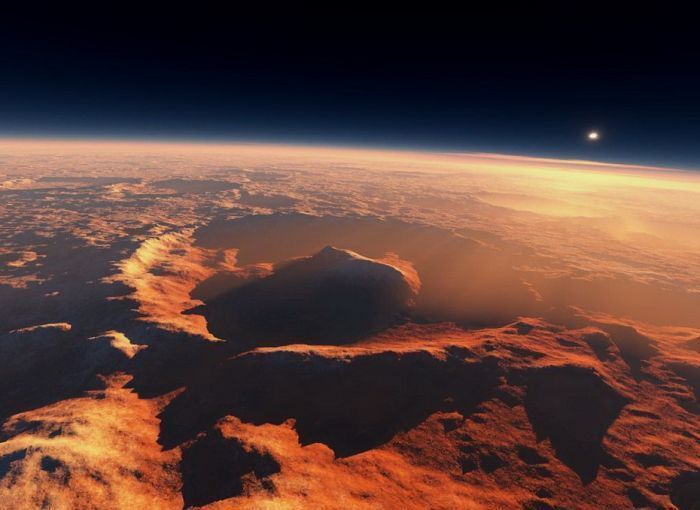|
|
Artistic Rendering Of Mars
|
Martian 'canals'
By the 19th century, the resolution of telescopes reached a level sufficient for surface features to be identified. In September 1877, a perihelic opposition of Mars occurred on September 5. In that year, Italian astronomer Giovanni Schiaparelli used a 22 cm telescope in Milan to help produce the first detailed map of Mars. These maps notably contained features he called canali, which were later shown to be an optical illusion. These canali were supposedly long straight lines on the surface of Mars to which he gave names of famous rivers on Earth. His term, which means 'channels' or 'grooves', was popularly mistranslated in English as canals.
Influenced by the observations, the orientalist Percival Lowell founded an observatory which had a 300 and 450 mm telescope. The observatory was used for the exploration of Mars during the last good opportunity in 1894 and the following less favorable oppositions. He published several books on Mars and life on the planet, which had a great influence on the public. The canali were also found by other astronomers, like Henri Joseph Perrotin and Louis Thollon in Nice, using one of the largest telescopes of that time.
|
|









